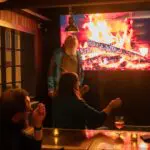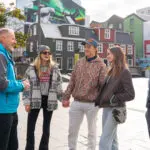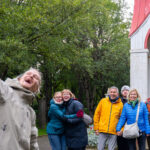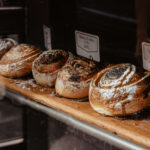East Iceland is one of the country’s most overlooked regions but has much to offer. With deep fjords, small fishing villages, and impressive mountains, it’s a place of dramatic landscapes without the big tourist crowds. It’s more remote than the south and west, making it a great choice to experience Iceland in a quieter, more relaxed way.
The region also has a strong cultural heritage, with folklore about elves and hidden people still playing a role in local stories. It’s the only part of Iceland where you’ll find wild reindeer, adding to its unique character. If you’re looking for stunning nature, history, and a slower pace, East Iceland is well worth a visit.
The History of East Iceland
Early Settlements: Viking Explorers and Norse Farms
East Iceland’s history dates back to the 9th century when Viking explorers and Norse settlers first arrived. The fjords provided natural harbours, while the surrounding land, though rugged, was suitable for farming and livestock. Early farms and settlements took root along the coastline and in sheltered valleys, forming the foundation for many of the villages that still exist today. The region played a key role in Iceland’s settlement era, with archaeological sites offering glimpses into how the first Icelanders lived.
Fishing and Trading: The Lifeline of the East

Fishing has been the backbone of East Iceland’s economy for centuries. Towns like Seyðisfjörður and Djúpivogur became important trading hubs, connecting Iceland to Europe. Danish merchants were especially active in the region, bringing goods in exchange for fish and other local products. Seyðisfjörður, with its deep fjord and natural harbour, became one of the country’s most important ports, while Djúpivogur maintained a long history of trade dating back to the 16th century. Fishing remains a key industry today, though modernisation has changed the nature of coastal communities.
Reindeer in Iceland: A Unique Eastern Feature

Unlike the rest of the country, East Iceland is home to wild reindeer, a species introduced from Norway in the late 18th century. Originally brought for farming, the reindeer quickly adapted to the region’s highlands and have remained in the wild ever since. Today, they roam freely across the eastern mountains, particularly in areas like Snæfell and Fljótsdalshérað. Their presence adds to the east’s unique character and offers visitors a rare wildlife experience.
World War II: The Allied Presence in Seyðisfjörður and Reyðarfjörður
During World War II, the Allies established bases in East Iceland to secure supply routes across the North Atlantic. Seyðisfjörður became a key naval station used by both British and American forces. Its deep fjord provided a strategic harbour for warships and supply convoys; remnants of wartime structures can still be found in the area. The oil tanker El Grillo was bombed by German aircraft in the fjord and remains on the seabed, a lasting reminder of the war’s impact on the town. You can read more about naval battles around Iceland here.
Further south, Reyðarfjörður was home to the second-largest Allied base in Iceland. The town, with a population of around 300 at the time, saw an influx of approximately 3,000 soldiers. Its naturally sheltered location made it an ideal military stronghold, and the base played a role in securing Iceland’s coastline during the war. Today, the Icelandic Wartime Museum in Reyðarfjörður preserves the history of this period, with exhibits detailing life under occupation, military operations, and the war’s influence on the region.
Museums and Cultural Sites in East Iceland
Skriðuklaustur (Near Egilsstaðir)

A former monastery turned cultural centre, Skriðuklaustur dates back to the late 15th century and was once an important religious and medical hub. Today, visitors can explore the ruins of the original monastery, learn about medieval Icelandic life, and visit the cultural centre housed in the striking 20th-century home of Icelandic author Gunnar Gunnarsson.
East Iceland Heritage Museum (Egilsstaðir)
This museum focuses on the region’s everyday life and traditions, with exhibits on farming, fishing, and the lifestyle of East Icelanders over the centuries. It also has a dedicated section on Iceland’s only wild reindeer population, detailing their history, behaviour, and impact on the local environment.
The Wartime Museum (Reyðarfjörður)
Located in what was once one of Iceland’s largest Allied military bases, this museum provides a fascinating look at Iceland’s role in World War II. Exhibits include wartime artefacts, photos, and personal stories from soldiers and locals. There’s also a reconstructed barracks area, giving visitors a feel for what life was like for troops stationed in the fjord.
Petra’s Stone Collection (Stöðvarfjörður)

One of the quirkiest attractions in East Iceland, this collection was started by resident Ljósbjörg Petra María, who spent her life gathering minerals and rocks from the surrounding mountains. The museum displays various Icelandic stones, including colourful jasper, agate, and zeolite. It’s a must-visit for geology enthusiasts and anyone interested in the natural beauty of Icelandic minerals.
The Eggs of Merry Bay (Djúpivogur)
This outdoor art installation features 34 large granite eggs, each representing a different species of bird found in the area. Created by Icelandic artist Sigurður Guðmundsson, the sculptures line the harbourfront in Djúpivogur, adding a unique artistic element to the fishing village. The installation celebrates the town’s connection to nature and birdlife, making it a popular stop for visitors exploring the east coast.
Must-Visit Natural Wonders in East Iceland
Hengifoss & Litlanesfoss

One of Iceland’s tallest waterfalls at 128 metres, Hengifoss is known for the striking red and black basalt layers in the surrounding cliffs, formed by volcanic eruptions over millions of years. On the hike up to Hengifoss, you’ll also pass Litlanesfoss, a smaller but equally stunning waterfall framed by tall hexagonal basalt columns. The hike to Hengifoss takes about 1–1.5 hours and offers incredible views of the valley below.
Lagarfljót Lake

This long, glacial-fed lake near Egilsstaðir is famous for its beauty and the legend of the Lagarfljót Wyrm, Iceland’s version of the Loch Ness Monster. Sightings of the serpent-like creature date back centuries, making it a favourite spot for folklore lovers. Hiking trails, forests, and scenic viewpoints surround the lake.
Hallormsstaðaskógur
Covering around 740 hectares, this is Iceland’s largest forest and one of the country’s best places for hiking and camping. The area has numerous well-marked trails, picnic spots, and even a small arboretum showcasing tree species worldwide. Despite Iceland’s reputation for barren landscapes, this forest proves that lush greenery can thrive here too.
Stórurð (The Giant Boulders)

One of East Iceland’s best-kept secrets, Stórurð is a surreal valley filled with massive boulders, bright blue glacial pools, and stunning mountain views. Glaciers shaped the area thousands of years ago, leaving behind a landscape that looks almost otherworldly. The hike to Stórurð is considered moderate to challenging, taking around 4–5 hours round trip, but the breathtaking scenery makes it well worth the effort.
Borgarfjörður Eystri
A paradise for hikers, this remote fjord offers some of Iceland’s most stunning and least-travelled trails. The area is known for its colourful rhyolite mountains, lush valleys, and one of the country’s best puffin-watching spots at Hafnarhólmi. From May to August, thousands of puffins nest here, giving visitors a rare chance to see them up close. The town of Bakkagerði, the gateway to the fjord, is also famous for its strong folklore ties and is said to be home to the Queen of the Elves.
Vestrahorn Mountain (Near Höfn)

One of Iceland’s most photographed mountains, Vestrahorn is a jagged, 454-metre-high peak rising dramatically from the black sand beach below. Located on the Stokksnes Peninsula, this area is popular among landscape photographers due to its ever-changing light and reflections in the wet sand. A small entrance fee is required to access the best viewpoints, but it’s well worth it for the stunning scenery.
Djúpivogur’s Black Sand Beach
Unlike the more famous black sand beaches in southern Iceland, Djúpivogur’s Búlandsnes Beach is a quieter, lesser-known spot where you can enjoy peaceful coastal views. The area is also an excellent place for birdwatching, with various seabirds nesting along the shore. It’s a perfect place to take a break and soak in the rugged beauty of Iceland’s eastern coastline.
Tours and Activities in East Iceland
Laki Craters & Surroundings Helicopter Tour – Skaftafell

Fly west of Vatnajökull National Park, soaring over Skeiðarárjökull glacier to the Lakagígar crater chain—a vast row of volcanic craters formed in the 1783 eruption, one of history’s largest. This aerial tour offers the best perspective on their staggering scale.
On the return journey, pass over the Súlutindar peaks, shaped by glaciers, and enjoy panoramic views of Skeiðarárjökull’s immense ice sheet. Experienced pilots provide expert insights throughout the flight, making this a spectacular way to witness Iceland’s dramatic landscapes.
Puffin Capital RIB Safari in Borgarfjörður Eystri

Experience Iceland’s wild beauty on this nature and wildlife expedition from Borgarfjörður Eystri, the Puffin Capital of Iceland. Hop on a state-of-the-art RIB boat and explore towering cliffs, rugged coastlines, and rich marine life.
Get up close to Atlantic puffins in their natural habitat, along with seabirds, seals, dolphins, and possibly even whales. Every tour offers a new adventure, guided by experts who bring the landscape and wildlife to life.
Vök Baths Comfort
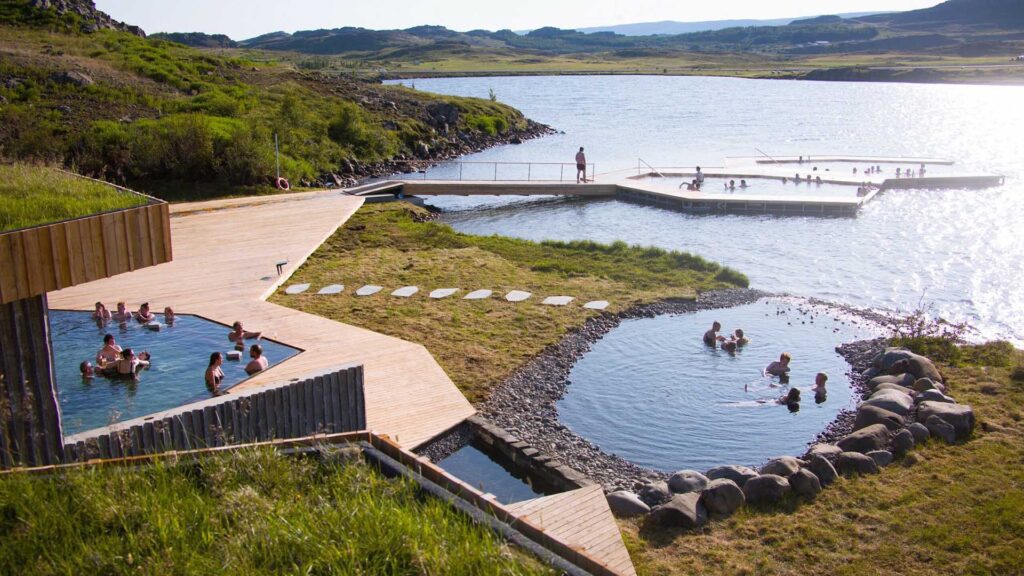
Relax in Iceland’s only floating geothermal pools at Vök Baths, located on Urriðavatn Lake, just minutes from Egilsstaðir. The East Fjords have little geothermal activity, making this a rare and special experience.
Enjoy infinity-view floating pools, onshore hot pools, a sauna, and a cold water spray tunnel. The Comfort admission includes a herbal tisane brewed from the hot spring and a drink from the in-water pool bar—all without leaving the warm water.
For an extra thrill, dip in Urriðavatn Lake before warming up again in the baths. Afterwards, visit Vök Bistro, offering fresh, locally sourced dishes. Booking in advance is recommended.
Best places to eat and drink in East Iceland
Nielsen Restaurant (Egilsstaðir)
Housed in Egilsstaðir’s oldest building, Nielsen Restaurant offers a refined menu crafted by a former head chef of Reykjavík’s Michelin-starred Dill restaurant. Expect high-quality, seasonal Icelandic ingredients turned into beautifully presented dishes. Opening hours vary seasonally; check their website or call ahead.
Skaftfell Bistro (Seyðisfjörður)

Located within the Skaftfell Art Center, Skaftfell Bistro is a cozy and artsy spot serving delicious meals that change regularly, focusing on fresh, locally sourced ingredients. A great place to grab a bite after exploring the town’s famous rainbow street. Typically open year-round, but hours may be reduced in winter.
Norð Austur Sushi & Bar (Seyðisfjörður)
One of Iceland’s best sushi spots, Norð Austur Sushi & Bar combines the expertise of skilled chefs with the freshest local seafood. If you’re a sushi lover, this is a must-visit. Open mainly during the summer months; confirm availability in advance.
Randulf’s Sea House (Eskifjörður)
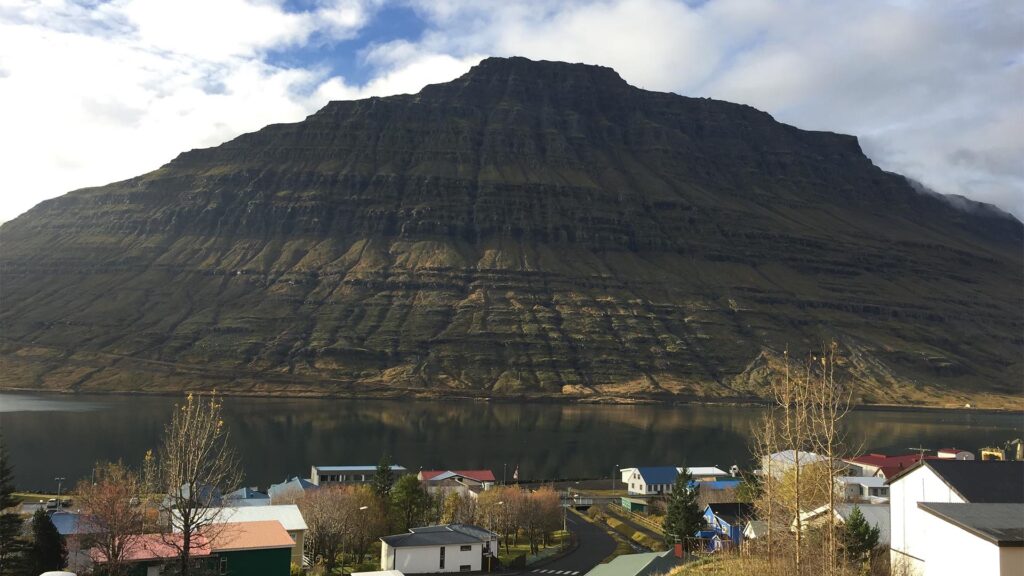
Set in a beautifully restored historic sea house, Randulf’s offers traditional Icelandic dishes, including freshly caught seafood. The rustic charm and waterfront views make it an unforgettable dining experience. Seasonal operation; check their schedule before visiting.
Café Sumarlína (Fáskrúðsfjörður)
This charming café is perfect for a relaxed coffee break or light lunch. Known for its delicious pastries and welcoming atmosphere, Café Sumarlína is a great spot to recharge. It is usually open during peak tourist season and has limited hours in winter.
Hótel Framtíð Restaurant (Djúpivogur)
Overlooking the harbor, this restaurant serves fresh seafood dishes such as grilled lobster tails and the catch of the day. Its cozy yet elegant setting makes it ideal for a memorable meal. The restaurant is open year-round but has varying hours depending on the season.
Eldhúsið (Egilsstaðir)
Eldhúsið is a stylish restaurant with vintage-inspired decor that serves beautifully plated dishes made from local ingredients. It also offers a solid vegan menu. It’s a great choice for those looking for something a bit more refined. Opening hours may fluctuate, especially outside of peak season.
Álfacafé (Borgarfjörður Eystri)

Known for its hearty fish soup and homemade bread, Álfacafé offers a cozy atmosphere with a unique interior, featuring furnishings made from local materials. It’s a great stop if you’re in the area exploring the famous puffin colony. Typically open during the summer when puffin watching is at its peak.
Folktales and Legends of East Iceland
Deep beneath the waters of Lagarfljót, a long, serpent-like creature is said to dwell. Known as the Lagarfljót Wyrm, this legendary beast has been part of Icelandic folklore for centuries. Stories describe it as an enormous, eel-like monster, sometimes seen slithering along the water’s surface or coiling beneath the waves.
According to legend, the wyrm began as a tiny worm, placed in a chest with gold to grow larger. Instead, it became a monstrous creature, escaping into the lake and growing so huge that its body was said to wrap around the lakebed. Sightings of the wyrm have been reported for generations, with modern videos and photographs adding to the mystery.
While no proof of the creature’s existence has been found, the legend remains strong, making Lagarfljót a place of curiosity and wonder for visitors and locals alike.
The wyrm is, however, not the only creature said to live in Lagarfljót.
The Seal and the Skate in Lagarfljót
In the northern part of Lagarfljót, near the Straumur farm in Kirkjubæjarsókn, there was once a fearsome creature—a massive nine-tailed skate lurking in the river. This beast caused great harm to many, especially since a ferry crossing was located nearby.
Eventually, a powerful sorcerer-poet arrived and recited binding verses, forcing the skate to the riverbed, where it has remained ever since, unable to cause any more trouble.
A sign of the skate’s deadly nature became evident when a convicted criminal once swam up the river. As he passed over the creature, his big toe touched it. Instantly, he felt a strange sensation. Upon reaching land, he saw that his toe had turned black and swollen. Without hesitation, he cut it off to prevent further harm.
A verse was composed about the skate:
“The broad-backed skate lies still
Beneath the rolling tide,
Its spine turned upward, restless still,
In the waters by Straumur’s side.”
But the skate was not the only monster in Lagarfljót.
Further downstream, beneath the waterfall, lurked an enormous seal that also brought misfortune to those who crossed its path. Like the skate, it was eventually bound in place by powerful sorcery. Trapped against the rocks beneath the waterfall, the seal remains motionless, unable to harm anyone again.
The Troll in Fáskrúð and the Priest’s Daughter
Once, at Kolfreyjustaður in Fáskrúðsfjörður, the priest’s daughter mysteriously disappeared. Despite an extensive search, no trace of her was ever found. Years passed, and the mystery remained unsolved.
One day, a group of fishermen was caught in a sudden storm. Seeking shelter, they rowed to Fáskrúð, a large rock island at the mouth of the fjord. While exploring the island, they discovered a cave and decided to spend the night inside.
Among them was a man named Þorsteinn, known for his ability to recite rímur (traditional Icelandic rhymed poetry). He began reciting verses from the Jesúrímur, a sacred poem to pass the time. As he finished a few stanzas, a voice from deeper within the cave spoke:
“Now my wife is entertained, but I am not.”
Þorsteinn responded, “What would you like to hear?”
The voice replied, “The Andrarímur are my favourite.”
Obliging, Þorsteinn began reciting the requested verses. After a while, the voice spoke again:
“Would you like some porridge, Steini?”
He agreed, and suddenly, from behind iron bars deeper in the cave, a large ladle filled with hot porridge was passed through. The men, though wary, ate the offering and found it surprisingly good.
At dawn, the storm subsided, and the fishermen left the island, recounting their strange encounter upon their return to shore. Hearing the tale, the townspeople suspected they had finally found the missing priest’s daughter—taken by trolls, living in captivity deep within the cave.
A few years later, on a cold morning at Kolfreyjustaður, the priest awoke to find a coffin placed outside the churchyard. When he opened it, he recognized his long-lost daughter, now lifeless. It appeared she had died in childbirth.
During the burial, a large troll stood outside the churchyard, weeping.
As soon as the ceremony ended, the troll walked toward the sea, stepping onto the water as if skiing out into the fjord. He vanished into the mist, never to be seen again.

